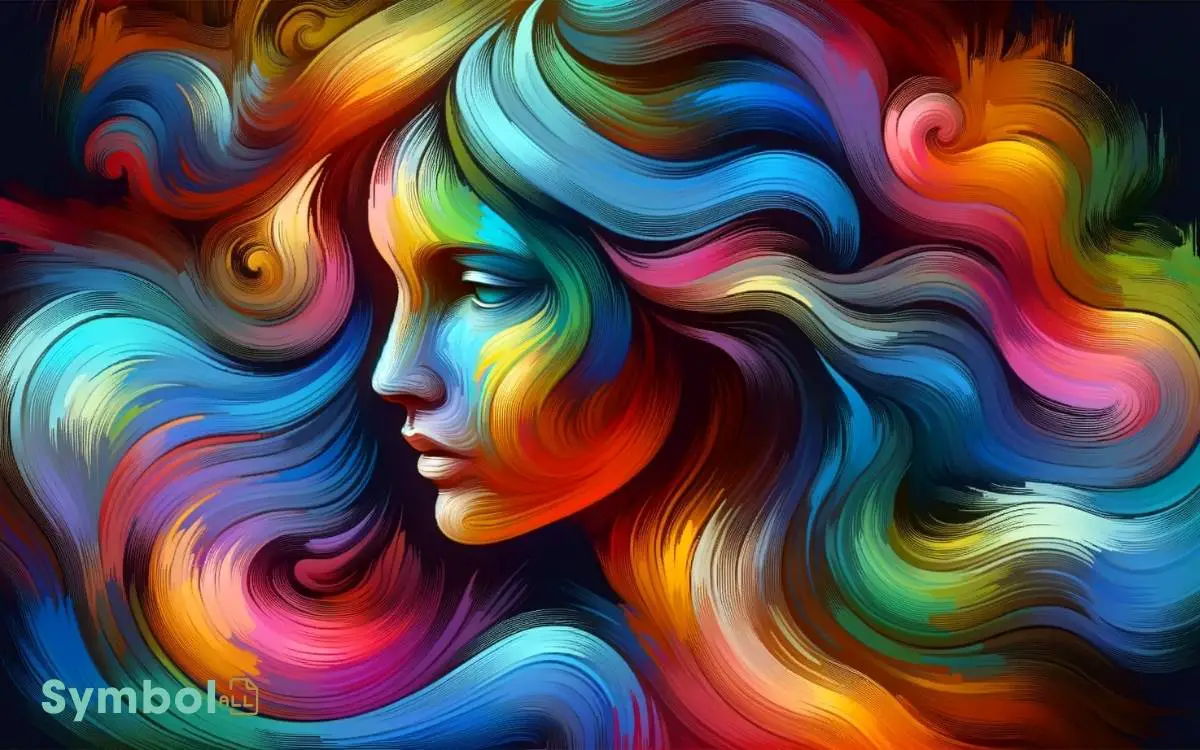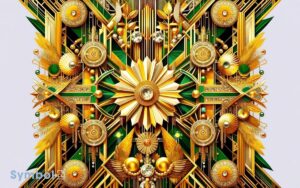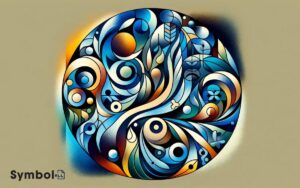The Colors Associated With Myrtle Symbolize Her: Explains!
The colors entwined with Myrtle reveal her multifaceted nature.
- Green symbolizes her connection to growth and renewal, reflecting her dynamic essence.
- White embodies purity and innocence, hinting at a nuanced understanding of her character.
- Pink underscores her nurturing side, suggesting a depth of vulnerability and youthfulness.
- Conversely, blue represents her inner strength and stability, hinting at underlying complexity.
Myrtle’s association with these colors paints her as a figure of substantial complexity and cultural significance, revealing layers of meaning that resonate deeply with her symbolic representation. Uncovering these layers promises insights into the rich tapestry of her symbolism.

Key Takeaways
6 Colors Associated With Myrtle Symbolize
| Color | Association with Myrtle | Symbolism |
|---|---|---|
| Green | Myrtle plant’s foliage | Renewal, fertility, and immortality |
| White | Myrtle flowers | Purity, innocence, and chastity |
| Blue | Blue myrtle berries | Mystery, depth, and sometimes sadness |
| Red | Color of myrtle berries | Passion, love, and sacrifice |
| Purple | Rare color in myrtles | Royalty, nobility, and spirituality |
| Gold/Yellow | Color of some myrtle blooms | Happiness, wealth, and joy |
The Essence of Green
Green, often symbolizing growth and renewal, plays a pivotal role in representing the essence of Myrtle, embodying its vitality and connection to nature.
This color, deeply rooted in the symbolism of life and vitality, underscores Myrtle’s association with the natural world, highlighting her intrinsic link to the earth‘s perpetual cycle of growth and regeneration.
Through this lens, you’ll appreciate how green not only reflects Myrtle’s physical presence within a verdant landscape but also mirrors her spiritual and emotional growth.
This color, consequently, becomes a multifaceted symbol, weaving together themes of life, renewal, and the natural progression of existence.
It’s this rich tapestry of meanings that makes green a critical element in fully understanding Myrtle’s character, offering insights into her profound bond with the cycles of life that govern the natural world.
Whites Purity Explored
Exploring Myrtle’s purity, white emerges as a symbol that transcends mere color, reflecting her innocence and the unblemished essence of her character.
This color, often associated with purity, innocence, and beginnings, reveals much about her persona. It’s not just a visual aspect but a profound representation of Myrtle’s intrinsic qualities.
Analyzing this choice of coloration, one must consider the cultural and historical significance of white as a symbol of purity. It’s a universal marker for cleanliness and virtue, attributes deeply woven into Myrtle’s identity.
However, the interpretation of white in relation to Myrtle isn’t superficial; it uncovers the layers of her character, showcasing the complexity beneath her seemingly pristine surface.
This choice of color, therefore, isn’t arbitrary but a deliberate depiction of Myrtle’s inherent purity and the multifaceted nature of innocence.
Pink: A Delicate Touch
Shifting from the purity symbolized by white, the color pink introduces a nuanced layer to Myrtle’s character, embodying her delicate and tender aspects.
This shade, often associated with femininity, adds depth, revealing a multifaceted personality beneath her exterior.
In analyzing Myrtle’s association with pink, several key points emerge:
- Vulnerability: Pink underscores her emotional openness and susceptibility to external influences.
- Nurturing Nature: It reflects her inherent desire to care and be cared for, highlighting a maternal side.
- Youthfulness: This color suggests a certain naivety and freshness, hinting at her unspoiled aspirations.
- Romantic Ideals: Pink conveys her deep-seated longing for love and affection, emphasizing her romantic inclinations.
These elements collectively enrich our understanding of Myrtle, painting her as a complex figure deserving of empathy and closer examination.
The Depth of Blue
Moving beyond the softness of pink, we now turn our attention to the depth of blue, a color that introduces a profound layer to Myrtle’s character, symbolizing her complexity and inner strength.
Blue, often associated with depth, stability, and wisdom, encapsulates Myrtle’s multifaceted personality.
It’s not merely a surface-level trait but a deep-seated part of her core, reflecting her resilience and the depths of her emotions.
This color choice suggests a tranquility that belies the turbulence beneath, indicating her ability to maintain composure despite the chaos surrounding her.
Blue’s association with introspection also highlights Myrtle’s reflective nature, suggesting a contemplative side that contemplates her place within the narrative.
Consequently, blue symbolically bridges her external persona with her internal battles, offering a nuanced insight into her character’s resilience and complexity.
Reds Fiery Passion
In contrast to the serene depth of blue, red’s fiery passion embodies Myrtle’s intense emotions and her indomitable spirit. This vibrant hue not only signifies the depth of her desires but also highlights the complexities of her character.
Analyzing the color red in relation to Myrtle reveals:
- Red symbolizes Myrtle’s fervent aspirations and her relentless pursuit of a better life.
- It reflects her boldness and willingness to challenge societal norms.
- The color underscores the volatility and danger inherent in her choices and relationships.
- Red also represents Myrtle’s love and passion, albeit often misdirected and fraught with consequences.
Understanding these aspects through the lens of color deepens the appreciation of Myrtle’s multi-dimensional character, showcasing the intricate interplay between her ambitions, actions, and the eventual repercussions of her choices.
Gold: A Hint of Immortality
You’ll find that the color gold represents more than just opulence or wealth; it’s a profound symbol of Myrtle’s eternal beauty and her timeless nature.
This hue transcends mere material riches, hinting at a richness of character and a depth of spirit that defies the passage of time.
As we explore its significance, consider how gold embodies not just the idea of immortality but a tangible manifestation of Myrtle’s enduring allure and significance.
Eternal Beauty Signified
Gold, often seen as a symbol of eternal beauty and immortality, plays a significant role in the symbolism associated with Myrtle.
This color isn’t just a marker of opulence; it deeply intertwines with the concept of everlasting allure, suggesting that Myrtle’s beauty transcends the physical domain and ventures into the metaphysical.
- Historical Context: Gold has been revered across civilizations, signifying not just wealth, but the pursuit of eternal life.
- Mythological Allusions: In many myths, gold is the color of the gods, denoting divine beauty and immortality.
- Psychological Implications: Gold evokes feelings of warmth and illumination, hinting at an inner light that doesn’t fade.
- Cultural Significance: Across cultures, gold symbolizes the highest attainment in beauty and spirit, reflecting an unending journey towards perfection.
Richness Beyond Wealth
Exploring the symbolism of gold reveals a domain of meaning that extends far beyond mere wealth, touching upon the kingdom of immortality and the eternal.
In your quest for understanding, you’ll discover that gold’s luster isn’t just a confirmation of its material value but also a symbol of something infinitely more profound.
This metal has historically signified the unattainable a bridge to the divine and a marker of eternal life. Scholars and philosophers alike have pondered gold’s capacity to resist tarnishing, seeing in this quality a metaphor for the soul’s incorruptibility.
When you encounter gold within the context of Myrtle, you’re invited to ponder not just the wealth it represents but the promise of something beyond mortal grasp: a hint of immortality itself.
Timeless Nature Explored
Exploring the core of gold reveals its purpose as not just a symbol of wealth, but as a guiding light of eternity, surpassing the limitations of earthly existence.
This lustrous metal, often associated with deities and immortality in various cultures, carries a profound meaning that resonates deeply with the human spirit.
- Indestructibility: Gold’s resistance to corrosion and tarnish mirrors the idea of an unfading, perpetual existence.
- Purity: Its ability to remain unaltered and pure symbolizes the incorruptible and eternal aspect of the soul.
- Radiance: The inherent glow of gold represents the divine light, guiding humanity towards enlightenment and understanding.
- Value: Beyond monetary worth, gold embodies the priceless nature of time and the everlasting journey of the spirit.
Through these attributes, gold serves as a beacon of immortality, inviting reflection on the timeless nature of our existence.
Purples Regal Presence
As you explore the regal presence of purple in relation to Myrtle, you’ll uncover its historic ties to royalty and nobility.
This hue’s psychological impact on perception and emotion further enriches its cultural significance, intertwining deeply with Myrtle’s symbolic meanings.
Analyzing these aspects sheds light on the profound layers of interpretation and value that purple adds to Myrtle’s symbolism.
History of Purples Royalty
The regal aura of purple throughout history signifies its exclusive association with royalty, wealth, and power, setting it apart as a color of significant prestige and influence.
This connection isn’t accidental; it’s deeply rooted in the scarcity and cost of purple dye in ancient times, which made it accessible only to the elite.
- Tyrian Purple: Extracted from the murex sea snail, this dye was so labor-intensive to produce that it was worth more than its weight in gold.
- Imperial Rome: Purple togas were reserved for emperors and senators, symbolizing their lofty status.
- Byzantine Empire: Emperors signed edicts in purple ink, reinforcing the color’s association with supreme authority.
- British Royalty: Purple has adorned the robes and crowns of English kings and queens, signifying their regal lineage and divine right to rule.
Understanding purple’s historical ties to royalty enhances its perception as a color of luxury and power.
Purples Psychological Impact
Beyond its historical prestige, purple’s impact on the psyche often evokes feelings of luxury, creativity, and a sense of the extraordinary, deeply influencing how you perceive its regal presence.
This color’s psychological effects aren’t coincidental; they’re deeply rooted in its rarity in nature and its costly production process historically. When you encounter purple, your mind is subtly guided towards notions of wealth, wisdom, and dignity.
It stimulates the imagination and inspires high ideals, often associated with spirituality and the divine.
The regal presence of purple, thus, doesn’t merely stem from its historical use by royalty but is augmented by its intrinsic ability to elevate your mental and emotional state, making you feel part of a grander narrative.
Myrtles Cultural Significance
Throughout history, myrtle’s association with purple has deeply influenced its cultural significance, embodying a regal presence that transcends mere color to symbolize power, spirituality, and nobility.
This connection isn’t just superficial; it’s deeply rooted in various cultures and traditions, where the hue and the plant together represent a complex tapestry of meanings.
- Royalty and Governance: Purple’s rarity and cost historically limited its use to royalty and the ruling class, linking myrtle with leadership and authority.
- Spiritual and Mystical Significance: Many cultures associate purple with the divine and the mysterious, positioning myrtle within sacred and spiritual spheres.
- Wealth and Exclusivity: The color’s association with wealth underscores myrtle’s status as a symbol of not just financial, but also cultural capital.
- Intellectual and Wisdom: Reflecting on purple’s traditional connection with wisdom, myrtle suggests a deep, thoughtful presence, valued in scholarly and philosophical contexts.
Shades of Brown: Earthy Connections
In exploring the shades of brown associated with Myrtle, you’ll find that these earthy hues symbolize deep-rooted connections to nature and stability.
This palette, ranging from the lightest beige to the deepest mahogany, reflects a spectrum of natural elements, grounding Myrtle in an aura of resilience and reliability.
Analyzing these tones, you’ll discover that each shade carries its own weight in symbolism. Lighter browns imply a nurturing, comforting presence, akin to fertile soil nurturing seeds to life.
Darker browns, however, resonate with strength and endurance, reminiscent of the steadfastness of tree trunks.
This duality presents Myrtle as a figure embodying both the gentle, life-giving aspects of nature and its unyielding, enduring force, illustrating a profound connection to the earth.
Conclusion
Ironically, while you’ve initiated on a colorful journey exploring the myriad hues associated with myrtle, each shade revealing a distinct facet of her essence, the irony lies in the universality of these colors. They’re not just her story; they mirror the human condition.
From the purity of white to the passion of red, these colors weave a complex tapestry of life’s contradictions. In scrutinizing myrtle’s palette, you’ve unwittingly plunged into the depths of your own psyche, unearthing emotions and connections that transcend mere botanical curiosity.






